By Lt. Col. Harold E.Raugh, Jr., Ph.D., U.S. Army (Ret.)
War stripped a man of his protective illusions and left only a terrible wisdom, which he had neither wanted nor consciously sought,” reflected Hugh S. Thompson on his emotionally and physically debilitating World War I combat service. Moreover, “war made a man suffer the tortures of the flesh and of the mind and spirit, which were matters of even greater import.” These were the postwar conclusions drawn by Thompson and recorded in his fascinating autobiographical Trench Knives and Mustard Gas: With the 42nd Rainbow Division in France, edited with an introduction by Robert H. Ferrell (Texas A&M University Press, College Station, 2004, illustrations, maps, notes, index, $29.95 hardcover).
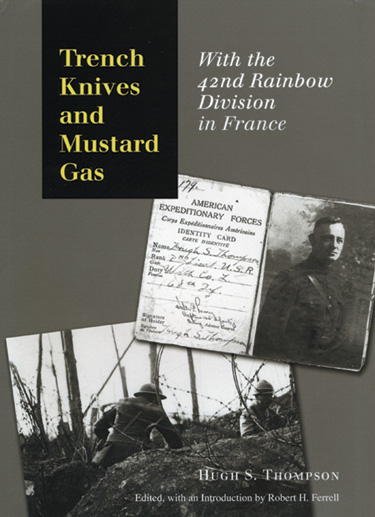 Thompson was born into a prominent family in Chattanooga in 1893. He was a Citadel cadet for two years, but left before graduating in 1913 when his mother died. When the United States entered World War I in April 1917, Thompson joined the army, attended Officers Training School, and was commissioned an infantry second lieutenant. After deploying to France with the first group of replacement officers in September 1917, he was assigned to the 42nd “Rainbow” Division.
Thompson was born into a prominent family in Chattanooga in 1893. He was a Citadel cadet for two years, but left before graduating in 1913 when his mother died. When the United States entered World War I in April 1917, Thompson joined the army, attended Officers Training School, and was commissioned an infantry second lieutenant. After deploying to France with the first group of replacement officers in September 1917, he was assigned to the 42nd “Rainbow” Division.
In vivid detail and well-crafted prose, Thompson chronicles his military service, beginning with his voyage overseas. No detail escapes Thompson’s keen attention, as he describes his assignment to M Company, 3rd Battalion, 168th Infantry and the unit’s march through the wintry French countryside to the sound of the guns. Being led into the trenches for the first time, he detected a “sickening odor.” Turning a corner, Thompson was startled to see that “the body of a dead German, in muddy, green-gray overcoat lay on the trench bottom. I felt a spasm of nausea at the unexpected sight of what had been a man.
The face was mud-smeared and distorted, the head a sickening livid, where the decomposed scalp had come off.” Worse was yet to come.
In February 1918, the 42nd Division served in the front lines of the trenches in the French sector. The Rainbow Division then defended against German attacks or was in reserve until July 1918. Thompson, who previously had been gassed near Baccarat, was wounded a second time in a German bombardment. He recuperated in time to be in the assault on the St. Mihiel salient, where German machine-gun fire shattered one of his legs. Thompson spent months in hospitals and underwent numerous operations to save his leg. He suffered a painful limp and illnesses caused by his gassing until his death from cancer in 1961.
Thompson’s gripping memoir was initially serialized in the Chattanooga Times in 1934. It required little editing by Ferrell, who added a number of explanatory endnotes. The maps are generally quite good, although some could better show locations mentioned in the text. Over 20 monochrome photographs provide a superb visual dimension to the narrative.
A master of introspection and description, Thompson has written a grim and realistic account of an infantry platoon leader in action in World War I. In this minor war classic, the jaded Thompson at times appears fatalistic, destined to fall victim in the boiling cauldron of merciless combat. This highly recommended memoir reveals that Thompson “was haunted for the rest of his life, as were so many millions, by that enormous catastrophe” of World War I.
Recent and Recommended
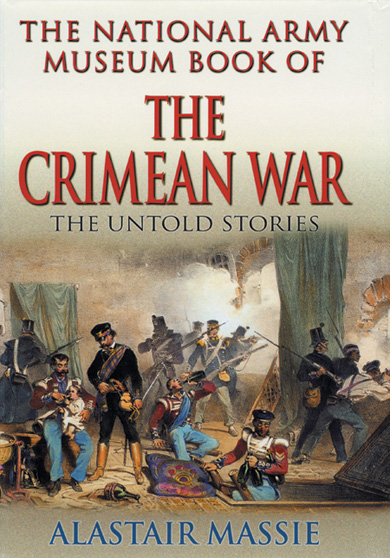 The National Army Museum Book of the Crimean War: The Untold Stories, By Alastair Massie, Pan Macmillan, London, UK, 2004, 280 pp., illustrations, maps, bibliography, index, $49.95 hardcover.
The National Army Museum Book of the Crimean War: The Untold Stories, By Alastair Massie, Pan Macmillan, London, UK, 2004, 280 pp., illustrations, maps, bibliography, index, $49.95 hardcover.
The Crimean War, 1854-1856, is well known for the initial British leadership, logistical, and tactical failures that caused tremendous suffering among the soldiers especially over the harsh winter of 1854-1855.
For the first time in history, an increasingly literate British public learned almost instantaneously, in uncensored reports sent via the newly invented telegraph, of the horrors of war and hardships of the soldiers. Moreover, the soldiers’ letters describing the realistic, grueling conditions in the Crimea were delivered home comparatively quickly by steamship. The unmatched collection of soldiers’ letters, diaries, and other accounts from the Crimean War, archived in Great Britain’s National Army Museum and used extensively in this chronicle, provide unparalleled insight into, and an unvarnished perspective on, the Crimean War participants’ trials and tribulations.
This fascinating book is divided into 10 chapters, organized chronologically, with each containing numerous contemporary officer and soldier letter and diary excerpts. The first five chapters focus on the background of the conflict and the British deployment to the Crimea, the battle of the Alma (September 20, 1854), the beginning of the siege of Sevastopol (October 1854), and the engagements at Balaklava (October 25, 1854) and Inkerman (November 5, 1854). Whereas many Crimean War studies concentrate on these “flashy” battles and give inadequate attention to the subsequent long siege and eventual capture of Sevastopol in September 1855, the author devotes four chapters to this crucial latter phase of the war—when the vast majority of soldiers’ letters and diaries were written. The final chapter chronicles the arguably anticlimactic end of the war and peace, when Captain Maxwell Earle wrote to his father, “I have seen more joy in the army after the taking of a rifle pit than after the fall of Sebastopol.”
Focusing on first-hand accounts of the Crimean War and ably supplemented with excellent maps and superb illustrations, this splendid book helps give a face to the anonymity of combat and sheds light on the human dimension of warfare.
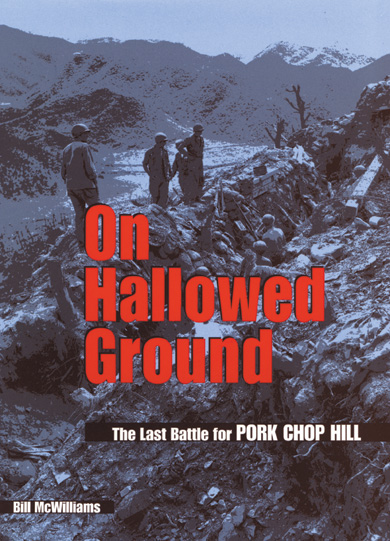 On Hallowed Ground: The Last Battle for Pork Chop Hill, by Bill McWilliams, Naval Institute Press, Annapolis, MD, 2003, 520 pp., illustrations, maps, notes, bibliography, index, $29.95 hardcover.
On Hallowed Ground: The Last Battle for Pork Chop Hill, by Bill McWilliams, Naval Institute Press, Annapolis, MD, 2003, 520 pp., illustrations, maps, notes, bibliography, index, $29.95 hardcover.
The final battle for Pork Chop Hill in July 1953 represents in many ways the frustrations and futility, as well as perseverance and gallantry, of the soldiers who served in the Korean War. This well-written narrative focuses on the operations of the 7th Infantry Division and its soldiers. It frequently shifts from strategy and operations, but concentrates on the tactical level of war. The 7th Infantry Division landed at Inchon in September 1950, advanced to the Yalu River, and fought bravely at the Chosin Reservoir. It participated in the “limited objective” offensives in 1951 that eventually ground to a standstill. Seesaw battles, reminiscent of brutal trench warfare with local attacks to seize key terrain, such as Pork Chop Hill, followed.
During the final armistice negotiations in the summer of 1953, the Chinese made a final attack to show their strength and enhance their bargaining position. Beginning on July 6, 1953, the Chinese, disregarding heavy casualties, attacked and surprised the 7th Division (with attached Ethiopian and Colombian battalions). After five days of raging counterattacks, where infantrymen with well-aimed rifle fire and the cold steel of fixed bayonets defended and captured positions and paid for their success with blood and sweat, the 7th Division evacuated Pork Chop Hill. There were over a thousand casualties in just two regiments of the 7th Division. The war ended on July 27. Author Bill McWilliams has skillfully blended official records and unit histories with participant interviews and reminiscences to craft what will certainly be the definitive history of this final Korean War operation.
In Brief
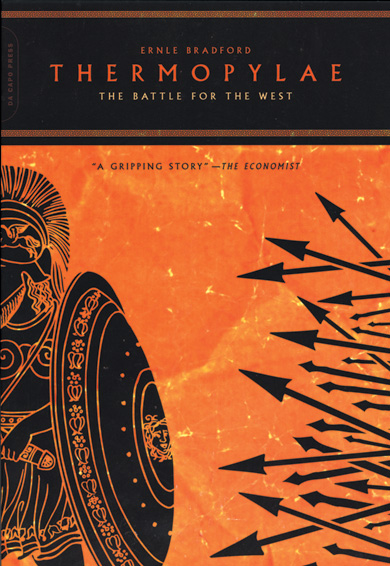 Thermopylae: The Battle for the West, by Ernle Bradford, Da Capo Press, Cambridge, MA, 2004, 255 pp., chronology, maps, select bibliography, index, $17.95 softcover.
Thermopylae: The Battle for the West, by Ernle Bradford, Da Capo Press, Cambridge, MA, 2004, 255 pp., chronology, maps, select bibliography, index, $17.95 softcover.
The last stand of King Leonidas and his stalwart 300 Spartans at the Battle of Thermopylae, 480 bc, has passed into history as an example of tremendous bravery and unparalleled self-sacrifice. This was a crucial battle in the war fought by the Persians (today’s Iranians) under King Xerxes, who tried to conquer the Greek city-states. The Greek strategy was to delay the Persian advance at the narrow Thermopylae pass in northern Greece. This would permit the other Greek states to prepare their forces and navy for the main Persian onslaught. After a Greek leader defected and informed the Persians of a way to bypass the Greek defenses, Leonidas dismissed his force, except for 300 Spartans, who stoutly resisted the Persians and fought to their last breath. Aimed at the general reader, this interesting chronicle uses classical and contemporary sources to provide a balanced account of the Greek-Persian War and the legendary Battle of Thermopylae.
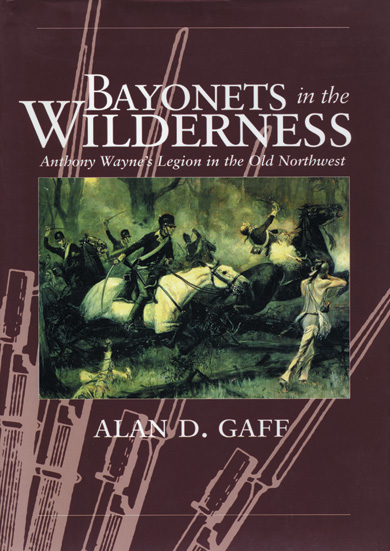 Bayonets in the Wilderness: Anthony Wayne’s Legion in the Old Northwest, by Alan D. Gaff, University of Oklahoma Press, Norman, 2004, 416 pp., illustrations, maps, notes, bibliography, index, $39.95 hardcover.
Bayonets in the Wilderness: Anthony Wayne’s Legion in the Old Northwest, by Alan D. Gaff, University of Oklahoma Press, Norman, 2004, 416 pp., illustrations, maps, notes, bibliography, index, $39.95 hardcover.
The period from the end of the Revolutionary War in 1783 to the War of 1812 has generally been a neglected era in American military history. Historian Alan D. Gaff shows that the fledgling U.S. Army was not idle, but engaged in military operations against British forces and their Indian allies in the Northwest territory in the 1790s. After the U.S. Army suffered crushing defeats in 1790 and 1791, President George Washington appointed Maj. Gen. Anthony Wayne (who may have been “a little addicted to the bottle,” but was not “mad”) to organize, train, and command the new “Legion of the United States.” Wayne trained experienced soldiers with green recruits in the unconventional methods needed to fight in the wilderness. Perhaps more significantly, he established a relatively effective supply system. A large Indian force unsuccessfully attacked Wayne’s troops at Fort recovery on June 30, 1794. After this pivotal engagement, Wayne’s force advanced deep into Indian territory and established an advanced post at Fort Defiance. Finally, in an area where a tornado had knocked down many trees—Fallen Timbers—Wayne’s force defeated an Indian army and crushed its spirit on August 20, 1794. This paved the way for a peace treaty the following year. In this notably outstanding study, Gaff effectively cuts through layers of myth and legend to authoritatively assess Wayne’s generalship and his successful 1794 campaign in the Ohio River area.
A Rage for Glory: The Life of Commodore Stephen Decatur, USN, by James Tertius de Kay, Free Press, New York, 2004, 237 pp., illustrations, bibliography, notes, index, $25.00 hardcover.
Naval historian James Tertius de Kay has written a fresh and perceptive biography of U.S. Navy Commodore Stephen Decatur (1779-1820). Decatur, commissioned a midshipman in 1798, commanded warships during the 1801-1805 Tripolitan War against the Barbary pirates. In 1804, he led a group of disguised sailors into the heavily defended Tripoli harbor, recaptured and burned the 36-gun American frigate Philadelphia, and escaped without losing a man. For this daring exploit, Decatur was promoted to captain at age 25 and propelled into the pantheon of naval heroes. During the War of 1812, Decatur demonstrated outstanding leadership in many important naval engagements, although he was captured in 1813 and paroled shortly thereafter. In 1820, Decatur was killed in a duel with Commodore James Barron, on whose court-martial Decatur had sat in 1808. De Kay shows circumstantially that this duel was caused by secret manipulations of jealous naval officers. Although somewhat one-sided and aimed at a general audience, this fast-paced biography offers fresh insight into the role and operations of the U.S. Navy in the early 19th century.
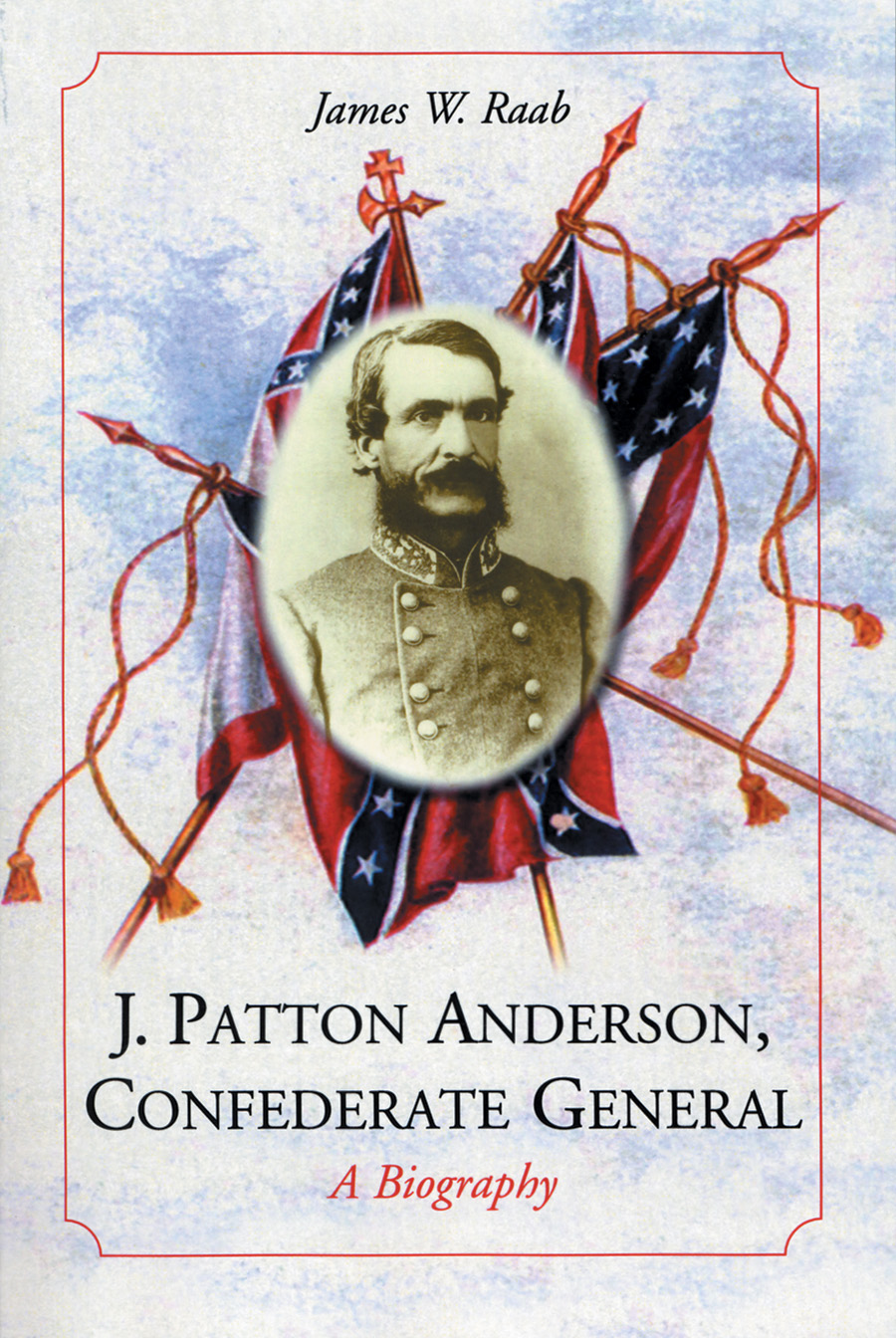 J. Patton Anderson, Confederate General: A Biography, by James W. Raab, McFarland, Jefferson, NC, 2004, 210 pp., illustrations, maps, appendix, notes, bibliography, index, $35.00 softcover.
J. Patton Anderson, Confederate General: A Biography, by James W. Raab, McFarland, Jefferson, NC, 2004, 210 pp., illustrations, maps, appendix, notes, bibliography, index, $35.00 softcover.
Since the 1863 Battle of Gettysburg, books about the Civil War reportedly continue to be published at the rate of one per day. This sustained interest in America’s fratricidal conflict, coupled with increased scholarly attention, has permitted historians to study more obscure engagements and less prominent generals and leaders. In this complete biography, James A. Raab chronicles the life and achievements of Confederate Maj. Gen. J. Patton Anderson. Anderson, born in Tennessee in 1822, studied and practiced law, raised and led a company of volunteers in the Mexican War, and served as U.S. marshal for the Territory of Washington. When the Civil War broke out in 1861, Anderson was living in Florida and was appointed a colonel in the Confederate Army. Promoted to brigadier general in early 1862 and major general in 1864, Anderson commanded a division at Shiloh, Farmington, Perryville, and Stones River, and later served at Chickamauga and Jonesboro, Georgia, where he was severely wounded. Anderson died in 1872, demonstrating to the end “the nerve of steel and the stoic bravery” that he had shown on the battlefield. This nicely crafted biography, containing interesting illustrations and many maps, takes advantage of Anderson’s unpublished correspondence and autobiography in recording the life and times of this unheralded Confederate commander.
Bennett has written a fascinating study of a relatively unknown aspect of the Civil War: “How common [Union] sailors—from old salts to new fishes—lived and fought in ships during the war.” Soldiers did most of the fighting, suffering, and dying in the Civil War, and sailors (numbering only about 118,000), on the fringes of the war, were rarely in the public eye. Whereas many Union soldiers came from rural towns and farms, sailors (frequently foreigners and former slaves) generally came from poorer segments of Northern industrial cities. “The typical Union sailor,” writes Bennett, “was a hard, pragmatic, and cynical man who bore little patience for patriotism, reform, and religion. He drank too much, fought too much, and prayed too little.” Bennett’s well-researched and innovative book is interesting, informative, and a delight to read.
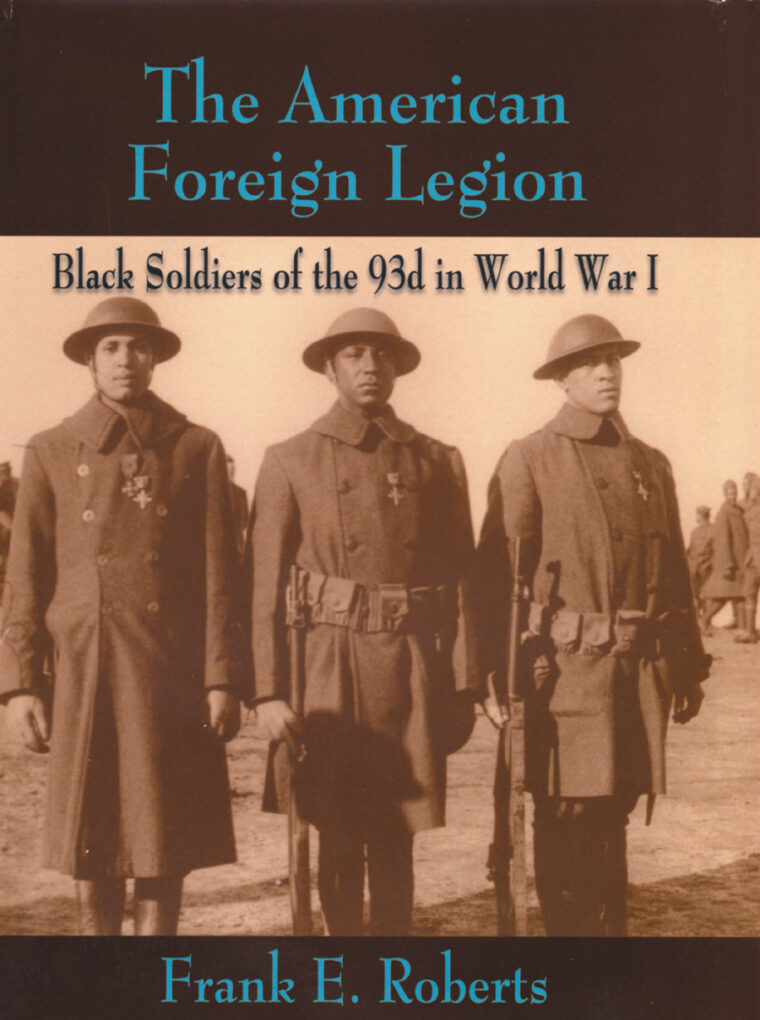 The American Foreign Legion: Black Soldiers of the 93d in World War I, by Frank E. Roberts, Naval Institute Press, Annapolis, MD, 2004, illustrations, maps, appendices, notes, bibliography, index, $29.95 hardcover.
The American Foreign Legion: Black Soldiers of the 93d in World War I, by Frank E. Roberts, Naval Institute Press, Annapolis, MD, 2004, illustrations, maps, appendices, notes, bibliography, index, $29.95 hardcover.
During World War I, the U.S. Army, as a reflection of civilian society, was a racially segregated military force. Black National Guard and conscript soldiers who wanted to fight for freedom on the European battlefields were assigned to the newly formed 369th, 370th, 371st, and 372nd Infantry Regiments of the 93rd Division. General John J. Pershing, commander of the American Expeditionary Forces (AEF), according to author Frank E. Roberts, considered these four regiments (of black and white officers and black enlisted men) “undesirable and not essential to the AEF and quietly ceded them to the French Army.” While attached to French units, which were more tolerant as a result of their African colonial experiences, the black soldiers proved their steadiness under fire and courage. The Germans came to fear the stalwart soldiers of these four regiments, calling them “black devils” and “blood-thirsty black men.” The lineage, formation, training, leadership, and combat operations of the four black regiments, and the gallantry of the soldiers serving in them, are chronicled in rich and sympathetic detail in this superbly researched and well-written volume. Roberts demonstrates convincingly that the “93d [Division] helped prove that patriotism, heroism, and brotherhood have no color, creed, or litmus test beyond what is in the human heart.”
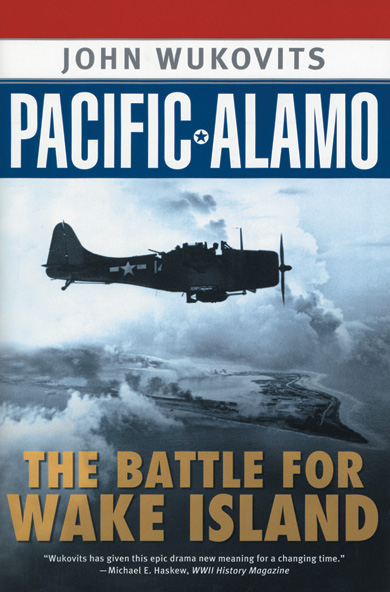 Pacific Alamo: The Battle for Wake Island, by John Wukovits, New American Library, NY, 2003, 308 pp., illustrations, maps, notes, bibliography, index, $14.00 softcover.
Pacific Alamo: The Battle for Wake Island, by John Wukovits, New American Library, NY, 2003, 308 pp., illustrations, maps, notes, bibliography, index, $14.00 softcover.
A Washington Post editorial sent 1941 Christmas greetings to the Marines, sailors, and civilian construction personnel of Wake Island by declaring “Merry Christmas, Marines … and give them Hell!” But it was not to be. The Japanese had attacked Wake Island by air on December 8, 1941 (December 7 at Pearl Harbor, some 2,000 miles to the east) and attempted a landing three days later that was repulsed. On December 23, about 1,500 Japanese Special Naval Landing Force troops assaulted the small coral atoll. After more than 12 hours of vicious and confused fighting against insurmountable odds, the American defenders capitulated. Most of them spent the remainder of World War II in humiliating Japanese captivity. Historian John Wukovits has written a powerful and evenhanded narrative, supplemented by participants’ contemporary accounts and more recent recollections, as well as official reports and documents, of the heroic defense of Wake Island. It was truly, in the words of President Franklin D. Roosevelt, a “great fight.”
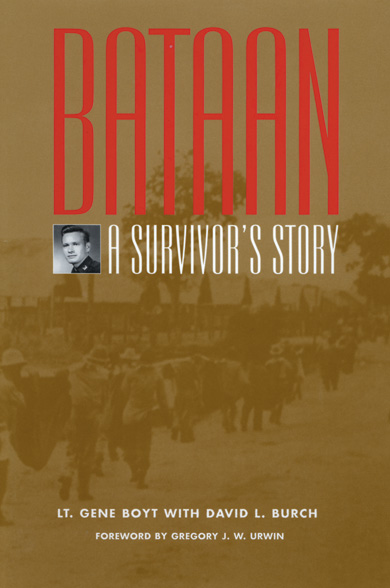 Bataan: A Survivor’s Story, by Gene Boyt with David L. Burch, University of Oklahoma Press, Norman, 272 pp., illustrations, maps, sources, index, $24.95 hardcover.
Bataan: A Survivor’s Story, by Gene Boyt with David L. Burch, University of Oklahoma Press, Norman, 272 pp., illustrations, maps, sources, index, $24.95 hardcover.
Thousands of American and Filipino soldiers on Bataan, after surrendering on April 9, 1942, were forced by their Japanese captors to march miles under the blazing sun and hideous conditions to internment at Camp O’Donnell. One of the participants in the infamous Bataan Death March was 25-year-old U.S. Army 2nd Lt. Gene Boyt. In this riveting account, Boyt traces his humble origins in Oklahoma and service with the Civilian Conservation Corps during the Depression, which paved the way for college and ROTC attendance and a commission as an Army engineer officer. He was assigned to the Philippines in July 1941 and became responsible for the engineering projects at Clark Field, which was devastated by enemy bombers despite earlier radio announcements of the Japanese surprise attack at Pearl Harbor. Boyt recounts the brutal Bataan Death March and 42 months of merciless captivity in the second half of this page-turning reminiscence. While the subject is unimaginable cruelty and deprivation, Boyt focuses on positive episodes, concluding that his Bataan and prison experiences did not extinguish his faith in humanity. This nicely written memoir is a testament to the courage and perseverance of Boyt and others who were prisoners of the Japanese.
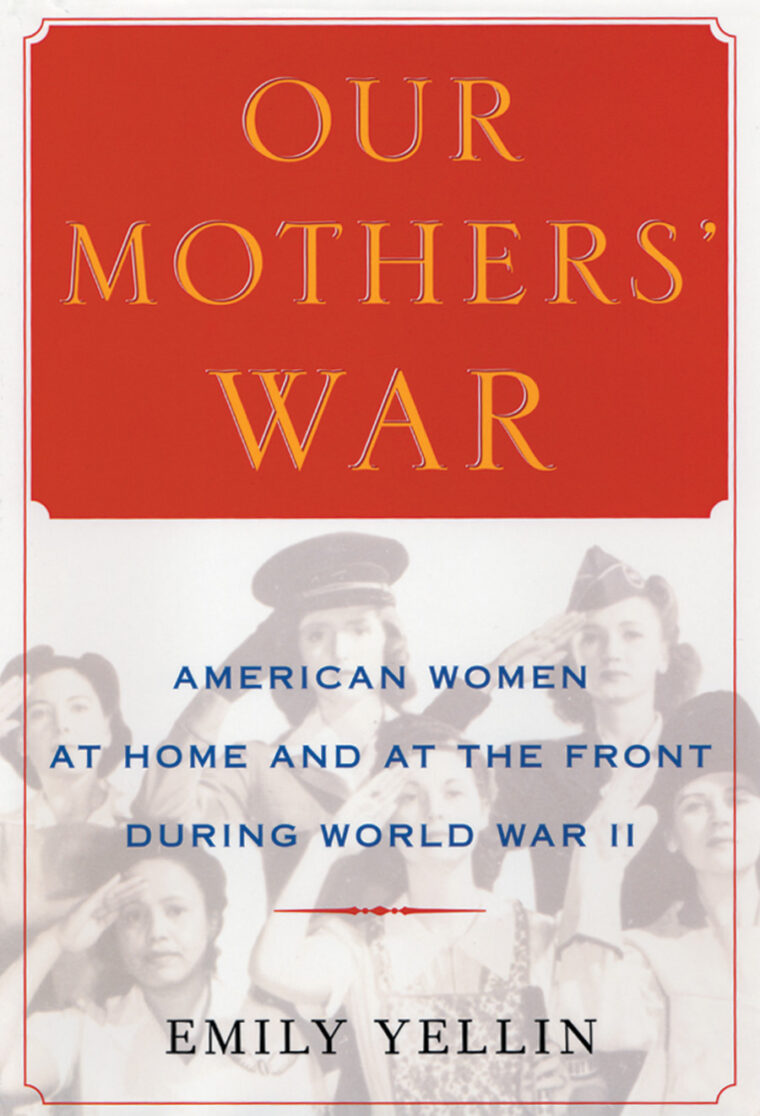 Our Mother’s War: American Women at Home and at the Front During World War II, by Emily Yellin, Free Press, NY, 2004, 464 pp., illustrations, notes, bibliography, index, $26.00 hardcover.
Our Mother’s War: American Women at Home and at the Front During World War II, by Emily Yellin, Free Press, NY, 2004, 464 pp., illustrations, notes, bibliography, index, $26.00 hardcover.
World War II was, in terms of gender roles and relationships, a pivotal period in American history. With millions of American men serving in the armed forces and fighting overseas, women had to fill many positions traditionally held by men. While the stereotypical perception is of dungaree-clad “Rosie the Riveter” working in the defense industry (and the long-legged Betty Grable in her famous bathing suit pin-up), women, according to author Emily Yellin, served in a tremendous variety of positions. In addition to non-combat military positions, women served as “spies, disc jockeys, big band trumpet players, members of Congress, and baseball players.” While Yellin examines both traditional and more unexpected female wartime roles, she highlights the probable impact this service had on civil rights and the women’s liberation movement of the 1960s and 1970s. Two interesting and unanticipated chapters focus on “Prostitutes, Unwed Mothers, and Lesbians” and “Right-Wing, Anti-Semitic Mothers’ Groups and Jewish-American Women.” While the author, by using letters, diaries, other documents, and interviews, strives to view the World War II through a female lens, the gender-specific vision is skewed and incomplete. Nonetheless, Yellin’s detailed recounting of the important and multidimensional role of women in World War II adds to the depth and richness of American history.
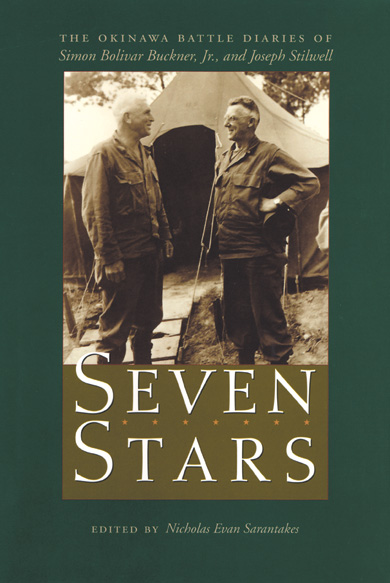 Seven Stars: The Okinawa Battle Diaries of Simon Bolivar Buckner, Jr., and Joseph Stilwell, edited by Nicholas Evan Sarantakes, Texas A&M University Press, College Station, 2004, 224 pp., illustrations, maps, notes, bibliography, index, $29.95 hardcover.
Seven Stars: The Okinawa Battle Diaries of Simon Bolivar Buckner, Jr., and Joseph Stilwell, edited by Nicholas Evan Sarantakes, Texas A&M University Press, College Station, 2004, 224 pp., illustrations, maps, notes, bibliography, index, $29.95 hardcover.
This interesting book, in addition to being biographical, is a comparative study in military leadership and combat command. “Seven stars” denotes the number of stars in the U.S. Army rank insignia of three-star Lt. Gen. Simon Bolivar Buckner, Jr., and four-star General Joseph W. Stilwell, successive commanding generals of the Tenth Army during the hard-fought 1945 Okinawa campaign. Buckner, known as an “average” and doctrinaire officer, commanded the Tenth Army during its initial assault on Okinawa on April 1, 1945, until he was killed in a Japanese artillery barrage on June 18, 1945. Buckner’s dogmatic tactics reportedly caused high American casualties. Stilwell, considered “a brilliant warrior with the social graces of a porcupine,” inspected the Tenth Army area in early June 1945 and succeeded Buckner in command when he was killed. Editor Nicholas Sarantakes first presents Buckner’s diary and concludes with Stilwell’s journal, juxtaposing the two when Stilwell was on Okinawa while Buckner was still alive and in command. The result, deftly edited with descriptive endnotes, is an appealing contrast of battle command and personality, providing a welcome glimpse into the conduct of the United States’ last military campaign of World War II.
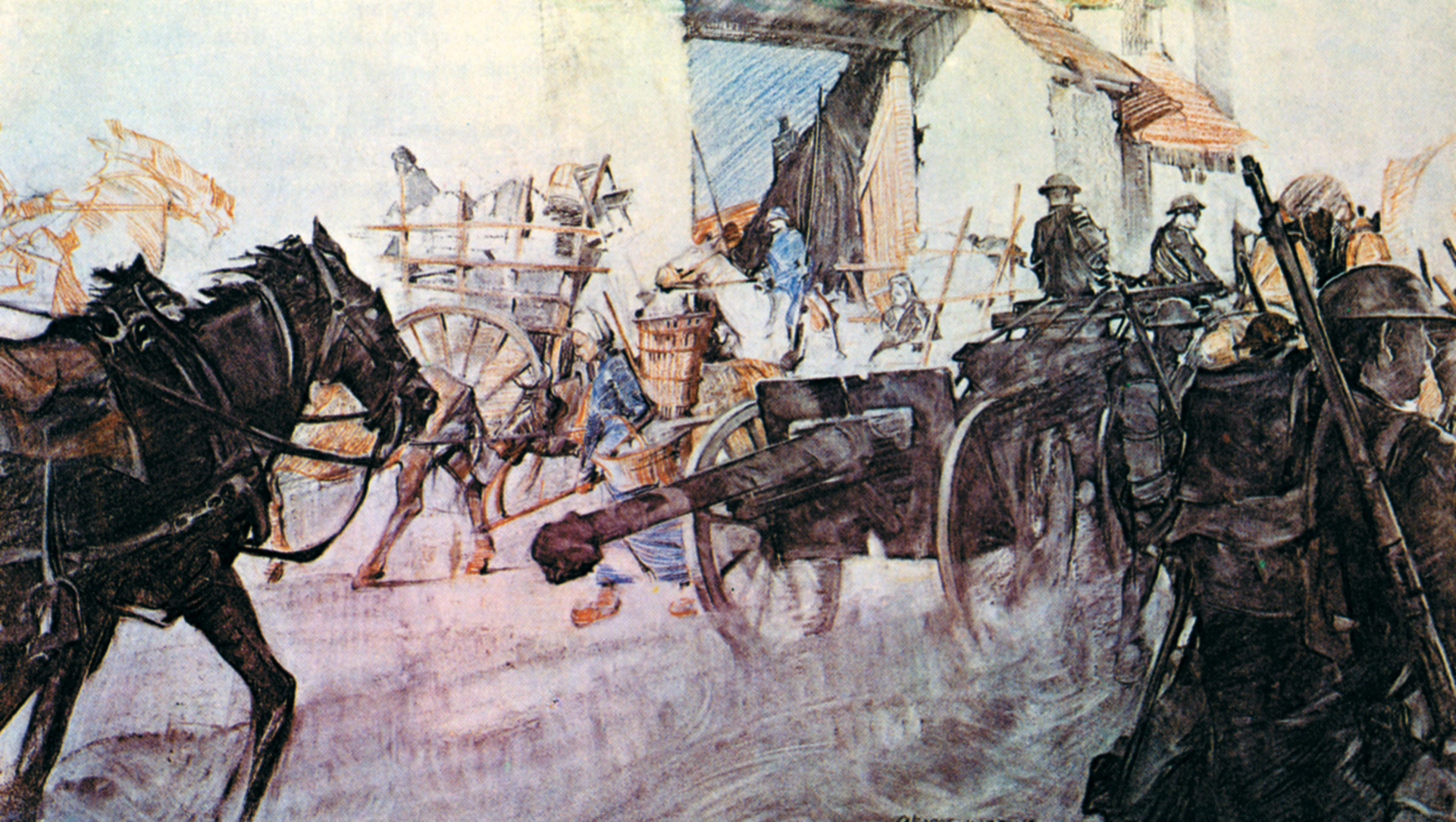
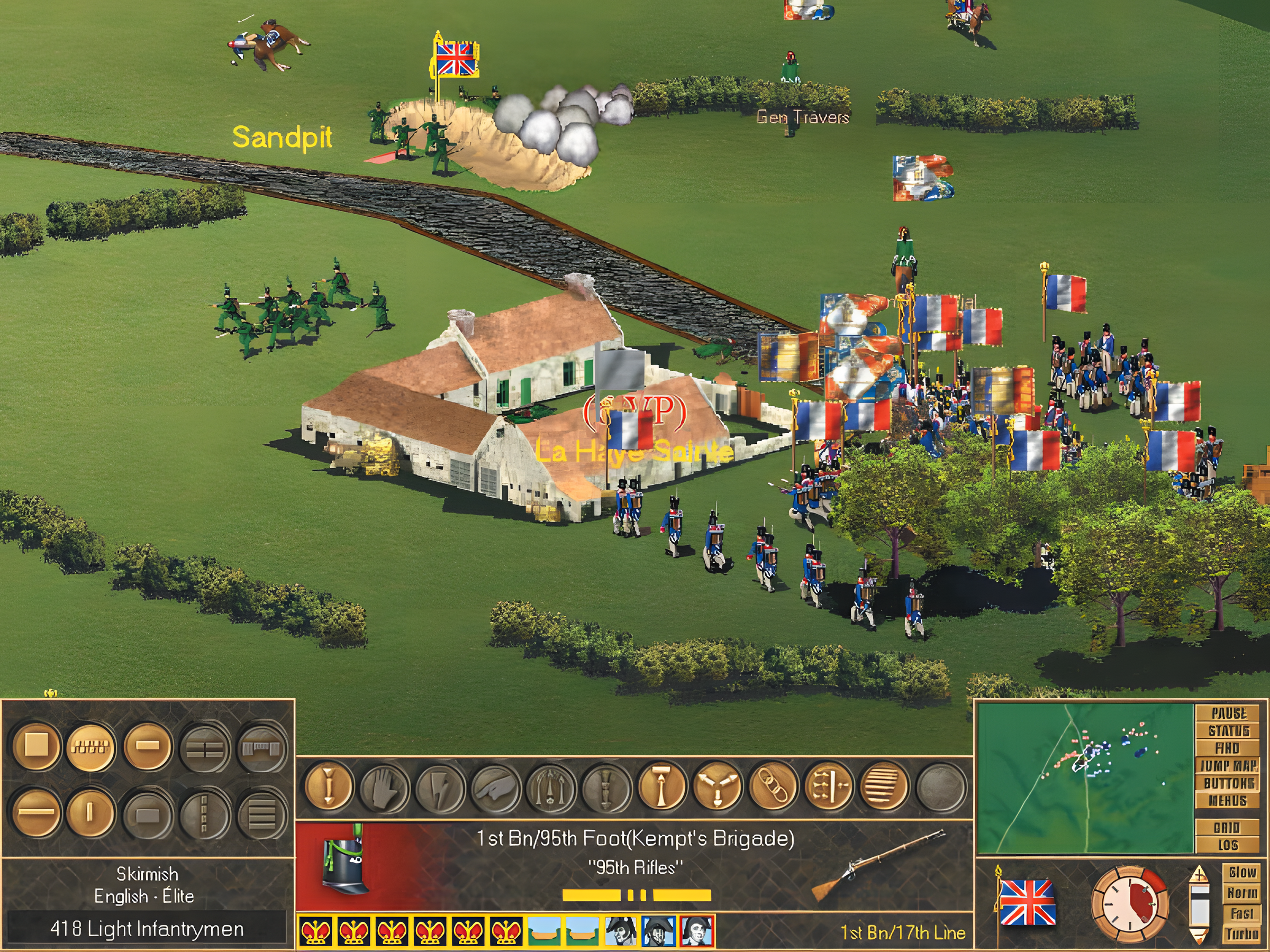

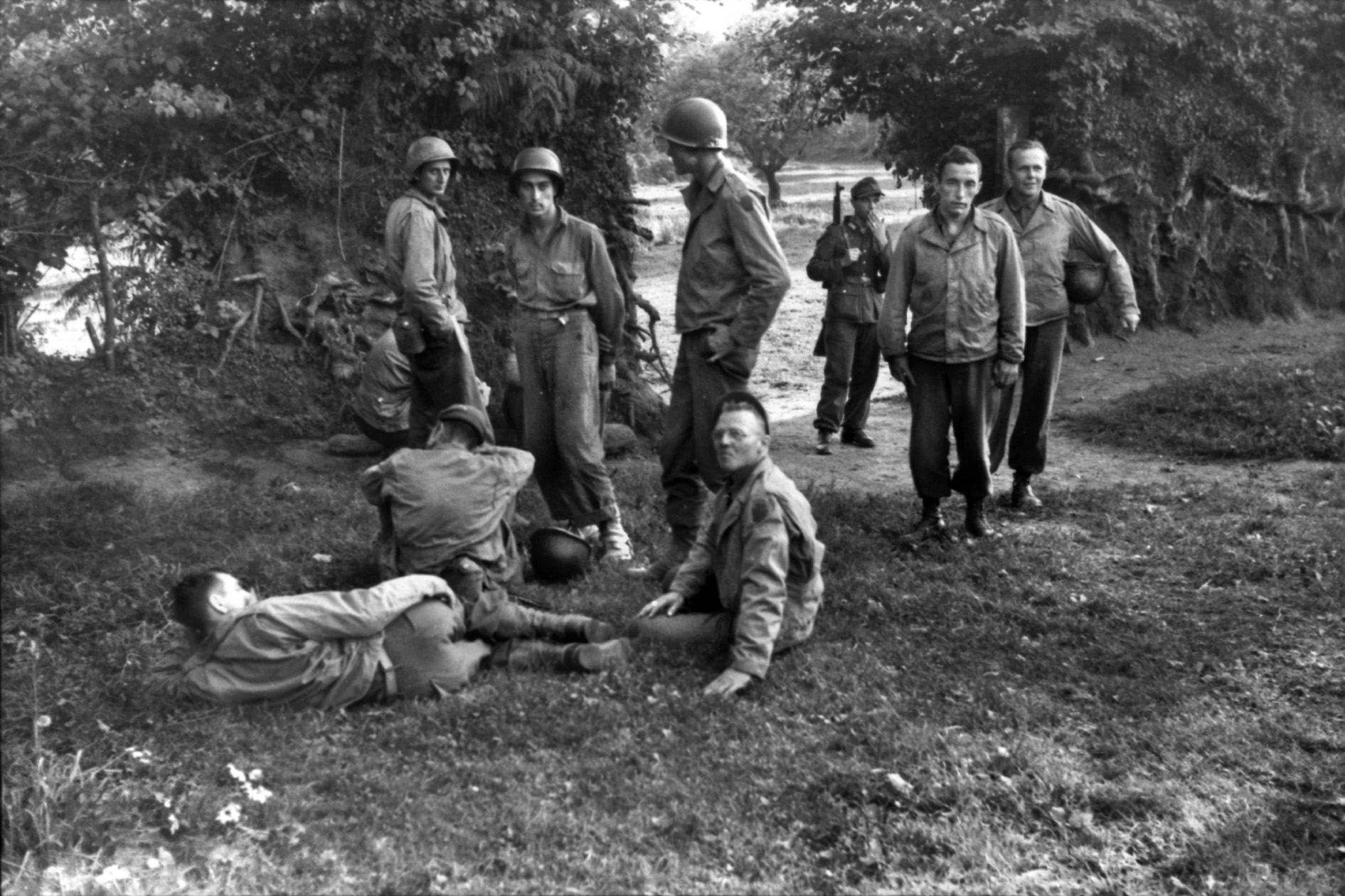
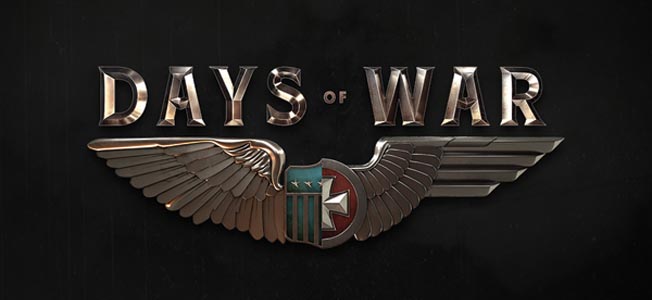

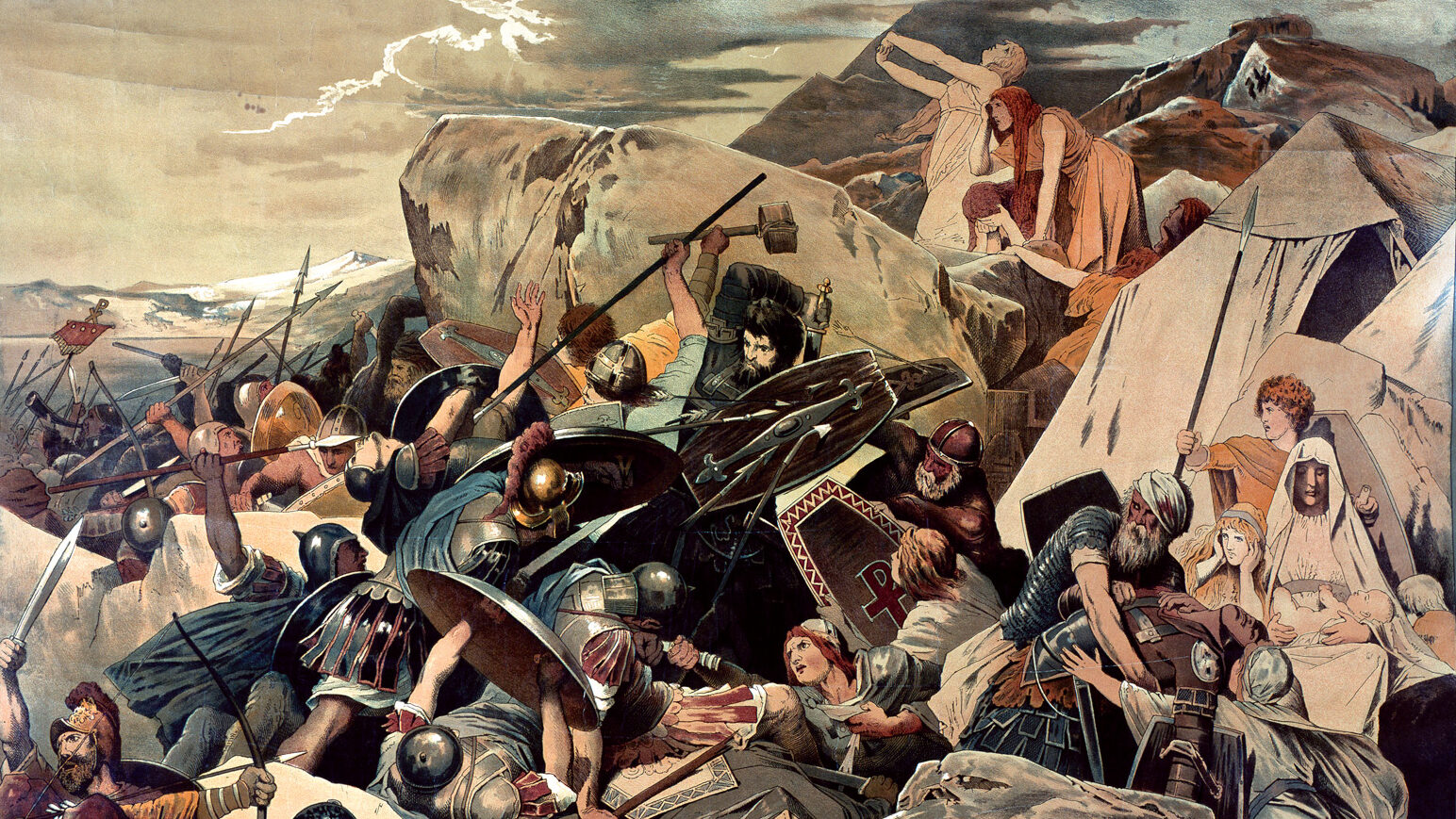
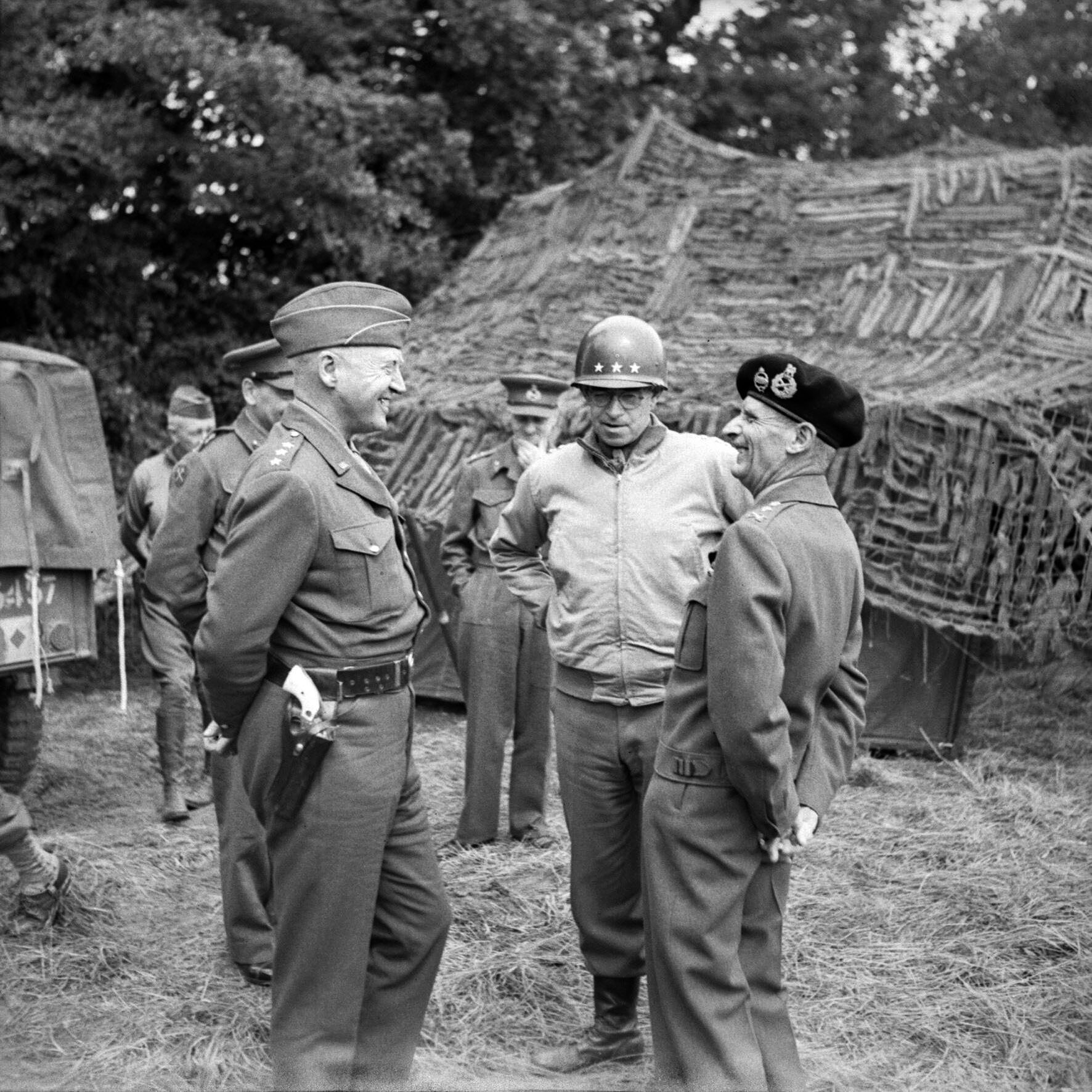
Join The Conversation
Comments
View All Comments